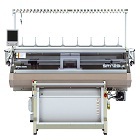"The 38th annual International Textile Machinery Shipment Statistics (ITMSS) results were released by the International Textile Manufacturers Federation (ITMF) recently and as per the figures in year 2015, shipments in some textile machinery segments saw a fall. Deliveries of new short-staple spindles fell by nearly 8 per cent from 2014 to 2015."

The 38th annual International Textile Machinery Shipment Statistics (ITMSS) results were released by the International Textile Manufacturers Federation (ITMF) recently and as per the figures in year 2015, shipments in some textile machinery segments saw a fall. Deliveries of new short-staple spindles fell by nearly 8 per cent from 2014 to 2015. Shipped long-staple spindles and open-end rotors decreased by 61 per cent and 6 per cent, respectively. The number of shipped draw texturing spindles fell by 26 per cent and shipments for new circular knitting machines by 6 per cent year-on-year. In contrast, deliveries of shuttle-less looms increased by 14 per cent in 2015 and shipments of flat-knitting machines rose by 52 per cent.
The report covers six segments of textile machinery. The 2015 survey has been compiled in cooperation with over 140 textile machinery manufacturers, representing a comprehensive measure of world production. This number does not include the numerous Chinese companies that are represented by the so called ‘District.’ Therefore, the amount of participating companies is likely to be around 200.
Spinning Machines saw a decline

Shipments of new short-staple spindles fell by nearly 8 per cent year- on-
year in 2015, the second decrease in a row. The level of short staple spindles declined to about 9 million spindles, the lowest level since 2009. Most of the new short staple sindles (92 per cent) were shipped to Asia, whereby shipments fell by 7 per cent year-on-year. Thereby China, the world’s largest investor of short-staple spindles, experienced a decline of 26 per cent, whereas deliveries to Bangladesh, Indonesia and Vietnam rose by 97 per cent, 4 per5 cent and 31 per cent, respectively. All of the five largest investors for short-staple spindles in 2015 originate from Asia. Including China these are India, Viet Nam, Bangladesh and Indonesia.
Shipments of open-end rotors too fell by 6 per cent to a level over 383,000 rotors in 2015. About 81 per cent of worldwide shipments of open-end rotors were destined for Asia. Thereby, deliveries to Asia increased moderately by over 2 per cent to nearly 312’000 rotors. In contrast, regions such as North America and Western Europe recorded annual percentage declines of 47 per cent and 60 per cent, respectively. Shipments to China, the world’s largest investor of open-end rotors increased in a big way by around 66 per cent in 2015. The world’s second and third largest investors in 2015 were India and the USA.
Texturing machines shipments fall
Global shipments of single heater draw-texturing spindles (mainly used for polyamide filaments) fell by nearly 82 per cent from over 6’500 in 2014 to nearly 1’200 in 2015. With 65 per cent Asia is the region where most of the single heater draw-texturing spindles were shipped to, followed by Eastern Europe with 32 per cent and South America with nearly 3 per cent.
In the segment of double heater draw-texturing spindles (mainly used for polyester filaments) the downward trend continued and global shipments fell by 25 per cent on an annual basis to over 322,000 spindles. Asia’s share of worldwide shipments amounted to close to 81 per cent. Thereby, China remained the largest investor accounting for 57 per cent of global shipments.
Weaving sees a spurt
Worldwide shipments of shuttle-less looms increased by 14 per cent to nearly 82,000 units in 2015. Thereby, shipments of water-jet and rapier/projectile shuttle-less looms increased by 24 per cent to nearly 30,000 looms and by 17 per cent to close to 32,000. In contrast, the deliveries of air-jet looms fell by over 1 per cent to a level of nearly 20,000 looms.
Not surprisingly, the main destination of shipments of all shuttle-less looms (air-jet, water-jet and rapier/projectile) in 2015 was Asia with 93 per cent of worldwide deliveries, of which 39 per cent were water jet looms and 37 per cent rapier/projectile looms. In Europe and North America 75 per cent and 25 per cent of shipments were for rapier/projectile looms, while the share of water-jet looms was only 8 per cent and 2 per cent, respectively.
Circular & Flat Knitting sales dip
In 2015, global shipments of large circular knitting machines fell by 6 per cent to a level of 26,700 units. Also for this category Asia is the world’s leading investor. 88 per cent of all circular knitting machines were shipped to Asia in 2015. With 53 per cent of worldwide deliveries China is the single largest investor. India and Bangladesh rank second and third with 6,500 and 3,100 units, respectively. Year 2015 was a very good year for the segment of electronic flat knitting machines as global shipments grew by 52 per cent to 70,100 machines, the highest level since 2011. Not surprisingly, Asia received the highest share of shipments (93 per cent). China remained the world’s largest investor for flat knitting machines in 2015. Thereby, Chinese investments increased from 19,000 units to 35,500 units.
The 2015 edition of ITMF's International Textile Machinery Shipments Statistics included for the 10th time data on finishing machinery as well. However, the questionnaire was revised to present a more accurate picture of shipments in this sector. Therefore, it is not possible to compare this version with previous versions of the finishing machinery statistics.












